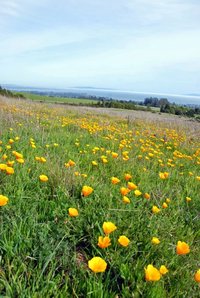Seminar with AU Biosciences and AURA
Exciting seminars with Professor Ingrid Parker and Greg Gilbert, University of California, Santa Cruz
Info about event
Time
Location
AU Biosciences at New Munkegade 114, building 1540, room 324.

Please join us on Monday, 24 August 2015 at AU Biosciences, where Ingrid Parker and Greg Gilbert will present two interesting talks featuring the following theme:
Pathogens play an important part in shaping the structure and dynamics of natural communities, because species are not affected by them equally. A shared goal of ecology and epidemiology is to predict when a species is most vulnerable to disease. A leading hypothesis asserts that the impact of disease should increase with host abundance, producing a ‘rare-species advantage’. However, the impact of a pathogen may be decoupled from host abundance, because most pathogens infect more than one species, leading to pathogen spillover onto closely related species. We study how the phylogenetic and ecological structure of the surrounding community can be important predictors of disease pressure in a grassland plant community. We formulate predictive models of pathogen sharing using a global database, then use these models to predict disease pressure at the local scale. We find that we can both explain variation in disease across a community of hosts and predict disease pressure for experimentally introduced novel hosts. Our work has implications for the maintenance of biodiversity, biotic resistance against introduced weeds, and the success of managed plants in agriculture and forestry.
At 10.15-10.55
Ingrid Parker (Ecology and Evolutionary Biology, UCSC)

Title:
Phylogenetic structure and host abundance drive disease pressure in communities
Abstract:
Pathogens play an important part in shaping the structure and dynamics of natural communities, because species are not affected by them equally. A shared goal of ecology and epidemiology is to predict when a species is most vulnerable to disease. A leading hypothesis asserts that the impact of disease should increase with host abundance, producing a ‘rare-species advantage’. However, the impact of a pathogen may be decoupled from host abundance, because most pathogens infect more than one species, leading to pathogen spillover onto closely related species. We study how the phylogenetic and ecological structure of the surrounding community can be important predictors of disease pressure in a grassland plant community. We formulate predictive models of pathogen sharing using a global database, then use these models to predict disease pressure at the local scale. We find that we can both explain variation in disease across a community of hosts and predict disease pressure for experimentally introduced novel hosts. Our work has implications for the maintenance of biodiversity, biotic resistance against introduced weeds, and the success of managed plants in agriculture and forestry.
At 11.00-11.40
Greg Gilbert (Environmental Studies, UCSC)
Title:
Wood-decay fungi and the maintenance of rare species in tropical rain forest
Abstract:
Most tropical tree species are rare. Here we explore the Enemy Susceptibility Hypothesis that inherent variation in susceptibility to attack by enemies such as wood-decay fungi may help explain why many species are rare (those that are more susceptible) whereas resistant species may become common. Using non-invasive sonic tomography of living trees in the 50-ha Forest Dynamics Plot on Barro Colorado Island, Panama, we found that nearly a quarter of all trees show internal decay by the time they reach canopy height, and that the probability of decay increases with tree diameter. Rare species are much more likely than common species to suffer decay. The high frequency of wood decay and variation among tree species suggests an important role for heart-rot fungi in shaping the dynamics and structure of tropical forest communities.

